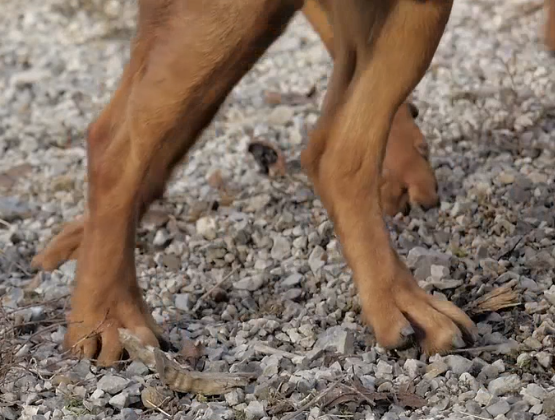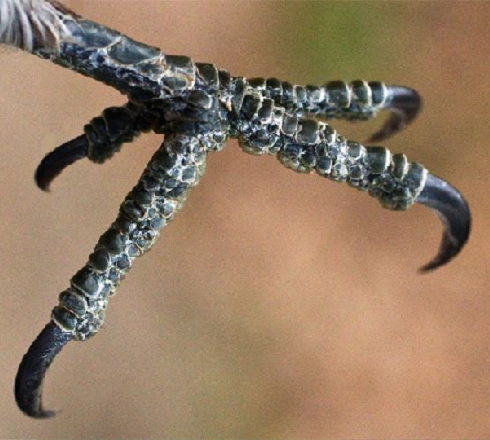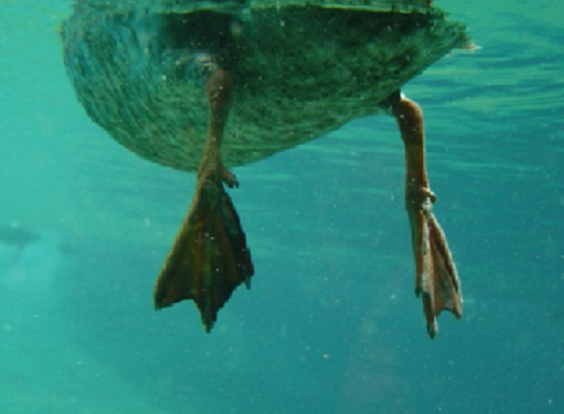Elementary | Daily Do
Why Does a Part's Shape Matter?
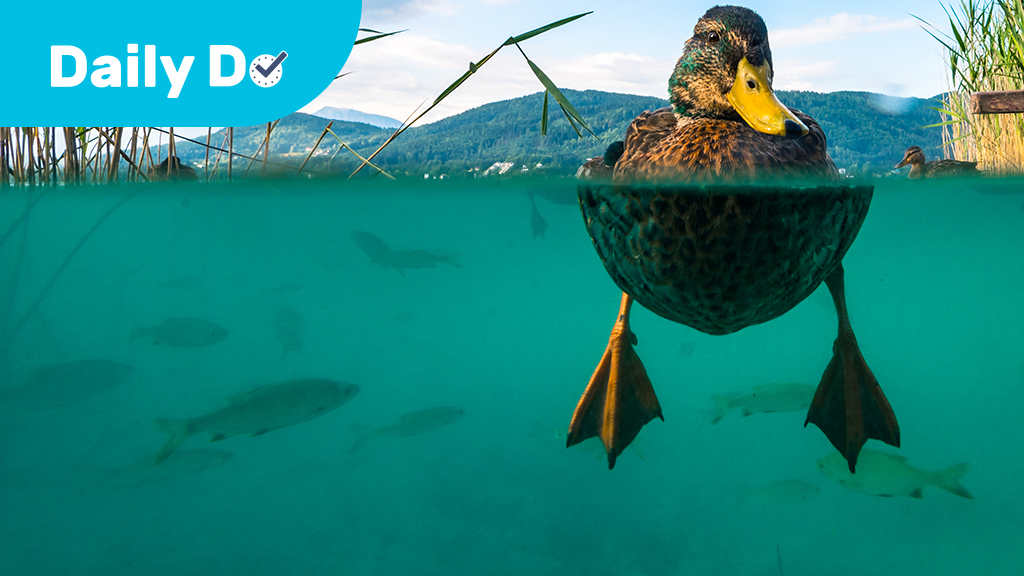
Crosscutting Concepts Disciplinary Core Ideas Is Lesson Plan Life Science Literacy NGSS Science and Engineering Practices Elementary Grade 1
Welcome to NSTA's Daily Do
Teachers and families across the country are facing a new reality of providing opportunities for students to do science through distance and home learning. The Daily Do is one of the ways NSTA is supporting teachers and families with this endeavor. Each weekday, NSTA will share a sensemaking task teachers and families can use to engage their students in authentic, relevant science learning. We encourage families to make time for family science learning (science is a social process!) and are dedicated to helping students and their families find balance between learning science and the day-to-day responsibilities they have to stay healthy and safe.
Interested in learning about other ways NSTA is supporting teachers and families? Visit the NSTA homepage.
What Is Sensemaking?
Sensemaking is actively trying to figure out how the world works (science) or how to design solutions to problems (engineering). Students do science and engineering through the science and engineering practices. Engaging in these practices necessitates that students be part of a learning community to be able to share ideas, evaluate competing ideas, give and receive critique, and reach consensus. Whether this community of learners is made up of classmates or family members, students and adults build and refine science and engineering knowledge together.
Introduction
No matter where you live, you see plants and animals everywhere. But did you ever stop to wonder What Makes Them Special? Here's your chance!
In today's task, Why Does a Part's Shape Matter?, students-as-scientists observe plants and animals through the special lens of structure and function (crosscutting concept) to figure out how the shapes of body parts (feet, beaks, shells, thorns, etc.) are related to the ways plants and animals use them to live and survive. Students-as-engineers use their noticings to inspire and inform them as they design solutions to everyday problems they and their families experience.
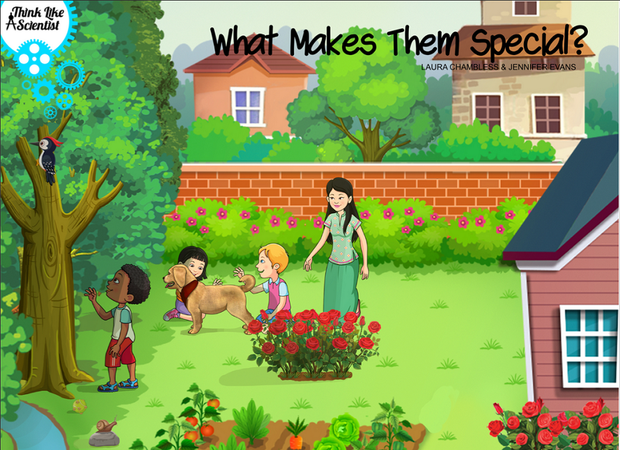
Preparation
Before you invite your students to read aloud or read along with you, take a few minutes to become familiar with the e-Book and suggested supporting resource(s).
STEP 1
Review the What Makes Them Special? Parent Guide to become familiar with the interactive features and overall structure of the book.
STEP 2
Open the What Makes Them Special? e-Book.
STEP 3
Open or print a copy of the Student Notebook. The notebook offers many ways to increase student engagement with the e-Book, including the use of question starters (how, when, where, why, etc.), Venn diagrams (to represent similarities and differences), and dedicated reflection space (to reflect on new learning). You will also find questions to ask students while reading the story to deepen their understanding.
Now you're ready to begin today's task!
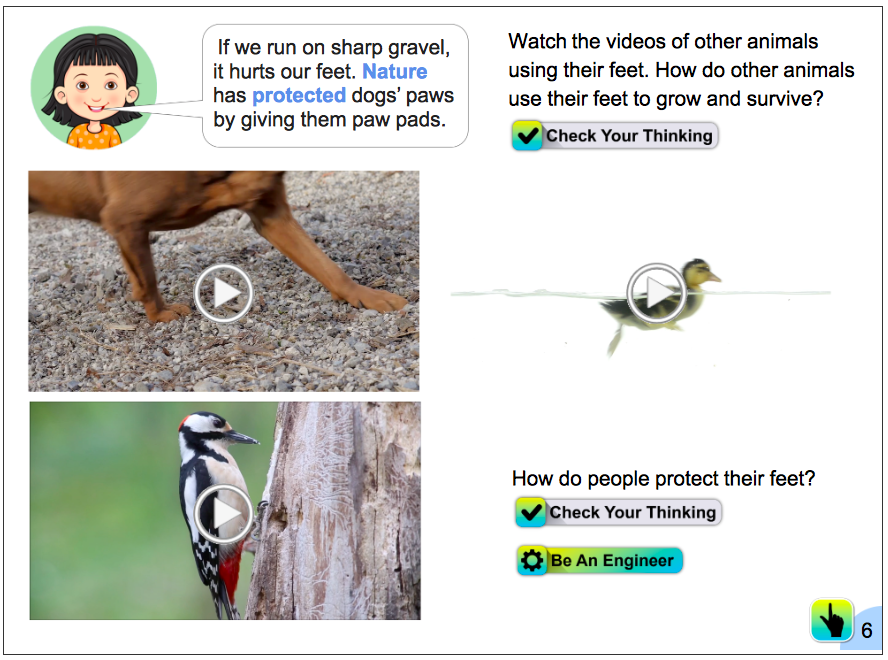
Page 6. Before watching the videos on this page, tell students, "I notice all of these animals have feet. Do you think the dog, woodpecker, and duck use their feet in the same way? Why do you say so?"
Give students time to think on their own. Encourage them to look at the pictures on this page and the pictures below (click to enlarge). Consider asking students to record their ideas using words and drawings. Ask students, "What are you noticing about the duck's (dog's, woodpecker's) foot that makes you think it is for swimming (running, holding on to trees)?"
Ask students to turn and talk to a partner (or assign students to small groups) to share their ideas about how the dog, woodpecker, and duck use their feet. Consider using the partner conversation supports below to facilitate the conversation. After each group member has a turn to speak, change roles and the animal discussed.
Speaker: I think [animal] uses its feet for _____ because _____.
Responder(s): I heard you say _____. (to honor speaker's ideas) I agree/disagree because ____?
Say, "It sounds like we think shape has something to do with the way an animal uses its feet. Let's watch the videos and see if our new observations support this idea."
Watch the videos. After each video, allow students time to add to or change their ideas about how that animal uses its feet.
Ask students, "What can we conclude about the way different animals use their feet? Do all animals use their feet in the same way? Why do you say so?" You might have students initially work in small groups, then use the groups' ideas to build a class answer (consensus) to the question.
| Table 1 | ||||||
|---|---|---|---|---|---|---|
|
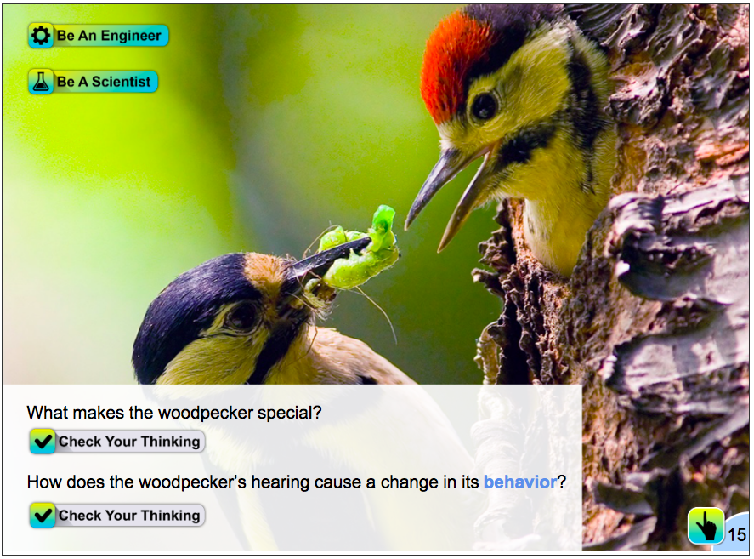
Pages 11 and 15. Skip the video on page 11 for now. Ask students, working in pairs, to observe the woodpeckers on page 15 and describe the woodpeckers' beaks. If students are struggling to express some describing words, ask one or more of these questions: What shape is the beak? Is the beak long or short? Thin or thick? Flat or curved? Pointy or dull?
Next, ask students, "How do woodpeckers use their beaks? Why do you say so?" Encourage students to use their observations to support their ideas. Students may say woodpeckers use their beaks to peck or to eat wood; this is acceptable. Follow up by asking, "What did you observe about the woodpecker's beak that supports your idea?"
Now watch the video on page 11. (This is the same video students watched on page 6, but students were likely paying close attention to the woodpecker's feet.) Allow student pairs to add to or change their ideas about how the woodpecker uses its beak. Ask students to turn and talk to a partner to answer the question "How does the shape of the woodpecker's beak make it possible for woodpeckers to catch insects?"
Ask students, "Do you think a woodpecker could catch fish with its beak? Why do you say so?" Again, encourage students to use their observations to support their ideas.
Next ask, "What do you think would be a good beak shape for catching fish?" Ask students to draw the beak of a bird that might catch fish. (Consider asking older students to include text and labels to communicate how their beak catches fish.)
Look for pictures of birds that catch fish in picture books, magazines, or wildlife websites. Ask students to compare their drawing to real fish-catching beaks. Ask, "Do you notice any patterns in the beaks of birds that catch fish?"
NSTA Collection of Resources for Today's Daily Do
NSTA has created a Why does a part's shape matter? collection of resources to support teachers and families using this task. If you're an NSTA member, you can add this collection to your library by clicking Add to My Library, located near the top of the page (at right in the blue box).
Check Out Previous Daily Dos From NSTA
The NSTA Daily Do is an open educational resource (OER) and can be used by educators and families providing students distance and home science learning. Access the entire collection of NSTA Daily Dos.



